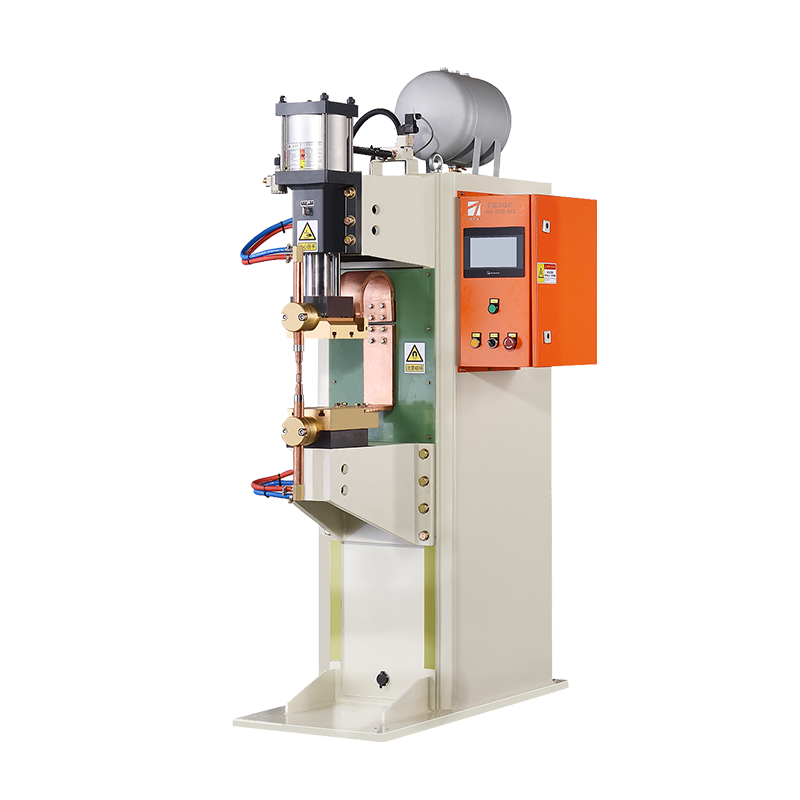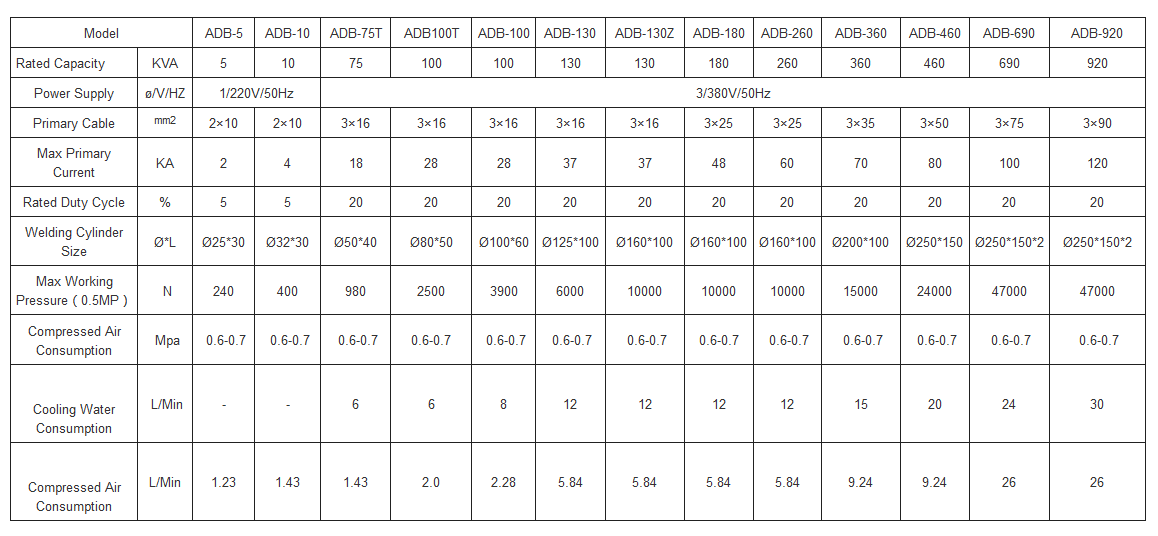
ADB-260 MFDC spot welding machine
Product Introduction
Product Introduction
-
01 Can effectively suppress welding spatter and obtain stable and high-quality welding results
The continuous heat supply generated by the flat output current of the intermediate frequency welding machine makes the temperature of the nugget rise continuously. At the same time, the precise control of the current rising slope and time will not cause spatter due to heat jumps and uncontrollable current rising time. Produce.
-
02 Short power-on time, high thermal efficiency, beautiful welding shape
The intermediate frequency inverter spot welder has a flat output welding current, which ensures the high-efficiency and continuous supply of welding heat. And the power-on time is short, reaching the ms level, which makes the welding heat-affected zone small, and the solder joints are formed beautifully.
-
03 High control precision
Due to the high working frequency (usually 1-4KHz) of the intermediate frequency spot welding machine, the feedback control accuracy is 20-80 times that of the general AC spot welding machine and the secondary rectification spot welding machine, and the corresponding output control accuracy is also very high.
-
04 Energy saving
energy saving. Due to high thermal efficiency, small welding transformer and small iron loss, the inverter welding machine can save more than 30% energy than AC spot welding machine and secondary rectification spot welding machine when welding the same workpiece.
-
05 Inverter spot welding machine is suitable for grid power supply balance, without power compensation equipment
It is used for spot welding and nut projection welding of high-strength steel and hot formed steel in automobile manufacturing industry, spot welding and multi-point projection welding of ordinary low-carbon steel plate, stainless steel plate, galvanized plate, aluminum plate, resistance brazing and spot welding of copper wire in high and low voltage electrical industry, silver spot welding, copper plate brazing, composite silver spot welding, etc.
Welder Details
Welder Details

Custom Process
Custom Process
Welder FAQ
Welder FAQ
-
Q: How to ensure the safety of spot welding machine?
A: Safe operating procedures need to be followed when operating a spot welder, including wearing safety gear, ensuring that the equipment is functioning properly, and avoiding touching exposed wires.
-
Q: Do Spot Welders Need Regular Maintenance?
A: Yes, regular maintenance will keep your spot welder running at its best and prolong the life of your equipment.
-
Q: What does the maintenance of the spot welding machine include?
A: Maintenance of a spot welder includes cleaning the equipment, replacing worn parts, checking electrical and power cords, and periodically checking the operating status of the equipment.
-
Q: Which electrode do I need for a spot welder?
A: The selection of electrodes should be determined according to the type and material of the welding project.
-
Q: How to deal with the wear of the electrode during the use of the spot welding machine?
A: When the electrode is worn out, it should be replaced in time to ensure the best operation of the equipment.
-
Q: How to choose the proper pressure of spot welding machine?
A: Proper pressure should be determined according to the type and material of the welding project to ensure the best welding results.


 Send email to us
Send email to us























































